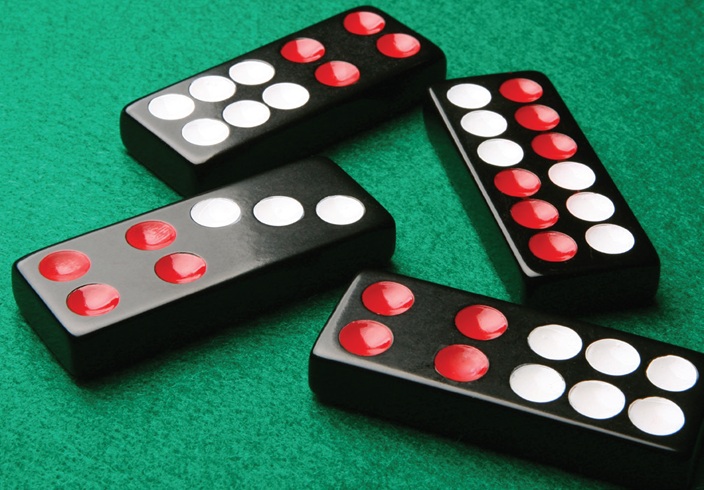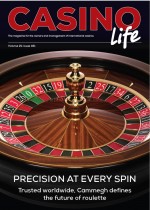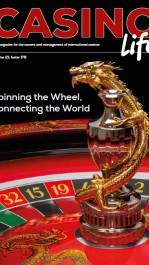Beyond the Great Wall
By Edwin Ford
Chinese gambling games have long held a prominent place in both traditional and modern gaming landscapes. Two of the most iconic Chinese games that have made their way into global casinos are Sic Bo and Pai Gow.
These games have roots deep in Chinese culture. Their journey from ancient pastimes to popular table games in both land-based casinos and online gambling platforms offers an intriguing story of adaptation and growth.
In this article, we explore the origins and development of Sic Bo and Pai Gow, their emergence in casinos, and how they evolved into prominent online and electronic terminal-based games. We’ll also examine the global adaptations inspired by these classic games, the house edge (hold percentage) for each game, and the territories where these games are most popular in live-table casino operations, including their presence in the United Kingdom and Europe.
The Origins of Sic Bo: From Ancient China to the Casino Floor
Sic Bo, meaning “dice pair” in Chinese, is one of the oldest and most-revered dice games in the gambling world. Its origins trace back more than 2,000 years to ancient China, where it was originally played with small bones or pebbles, evolving into the dice game we recognize today.
Early origins and traditional game play
The game is believed to have been played during the Han Dynasty (206 BCE – 220 CE), where it was often used as a form of entertainment during festivals and celebrations. In its early form, Sic Bo used various small objects, such as bones or bamboo sticks, which were shaken and cast from a container. Players would bet on the outcomes based on the landing combinations of these objects. Over time, the game transitioned to using dice, which was more practical and standardized for modern play.
Sic Bo's introduction to the casino floor
Sic Bo first appeared in the casino world in the early 20th century, particularly in Macau, where it became a popular gambling game in Chinese communities. The game then spread to other parts of Asia and beyond, as casinos expanded into new markets. The game is easy to understand, yet offers a wide range of betting options, making it appealing to both casual and experienced players.
- Traditional Casino Tables: In land-based casinos, Sic Bo quickly became a popular table game, often placed alongside other classic casino offerings like roulette and baccarat. The large betting layout and the excitement of rolling three dice generated a unique atmosphere at the tables.
- Electronic and Terminal Games: With the advent of electronic gaming machines, Sic Bo made its transition to electronic terminals in the late 20th century. These terminals mimicked the game play of traditional Sic Bo tables but were automated, allowing players to interact with touchscreens to place their bets and watch the dice roll digitally. This made Sic Bo more accessible and increased its reach to players who may not have been familiar with the traditional format.
Sic Bo’s online evolution
As online casinos began to rise in prominence during the 2000s, Sic Bo found a natural home on digital platforms. Many online casinos began offering virtual Sic Bo games, where players could simulate the excitement of the traditional dice rolls from the comfort of their homes. These versions often include various betting options, animated dice rolls and the ability to play at any time. Moreover, the rise of live-dealer Sic Bo has allowed online casinos to replicate the brick-and-mortar casino experience, where players interact with real dealers via live video feeds, providing an immersive and engaging environment.
House edge for Sic Bo
The house edge for Sic Bo varies depending on the bet being placed. Here are some typical house edges for different betting options:
- Small/Big Bet (betting on whether the total of the dice will be small (4–10) or big (11–17)): 2.8 percent
- Specific Triple Bet (betting on a specific triple like 1-1-1, 4-4-4, etc.): 16.2 percent (highest house edge)
- Any Triple Bet (betting that any triple will appear): 11.1 percent
- Combination Bet (betting on two specific numbers): 5.5 percent
- Total Sum Bet (betting on the sum of the dice): Varies between 7.4 percent and 12.5 percent, depending on the specific sum.
Popular territories for Sic Bo
Sic Bo is primarily popular in the Asia-Pacific region but has seen substantial growth in land-based and online casinos globally. The following are the primary territories where Sic Bo is commonly played:
- Macau: As the gambling hub of Asia, Macau is home to numerous casinos where Sic Bo is a prominent table game. The game is often found in the VIP rooms and on the main gaming floor of large resorts and casinos, such as The Venetian Macao and Galaxy Macau.
- Singapore: Sic Bo is widely played in resorts such as Marina Bay Sands and Resorts World Sentosa. These destinations attract both international tourists and locals, with Sic Bo featured prominently alongside other popular casino games.
- Las Vegas: While less common than in Asia, Sic Bo can be found, particularly in casinos with a focus on Asian gaming, like The Orleans and The Venetian Las Vegas. Sic Bo’s popularity has been growing in the United States market in recent years, especially in regions with a large Asian population.
- Online Casinos: Online platforms such as Bet365, Leo Vegas, and William Hill, to name but a few, offer a wide variety of Sic Bo games, including live-dealer options, attracting a global audience.
Sic Bo in the UK and Europe
Sic Bo is not as widely played as other traditional casino games like roulette or blackjack, but it can still be found in certain casinos and online platforms:
- UK: While Sic Bo is not a mainstream game in UK land-based casinos, it can be found in some venues with a focus on offering Asian-style games. It is available at some online UK casinos, particularly those that provide a wide range of international games. Platforms like Bet365 and 888 Casino often feature Sic Bo, especially in their live-dealer sections.
- Europe: Sic Bo is primarily found in Macau-style casinos or those catering to Asian visitors, such as in Monte Carlo or London's Chinatown. However, it remains less common compared to more traditional European games. Sic Bo is available at many European online casinos, including Leo Vegas and Casino.com, with live-dealer versions providing an authentic experience.
Pai Gow: A Journey from Dominoes to Cards and Casinos
Unlike Sic Bo, which originated as a dice game, Pai Gow has its roots in Chinese dominoes. The game is believed to date back to the Tang Dynasty (618–907 AD), and its popularity surged during the Song Dynasty (960–1279 AD). Originally played with a set of 32 Chinese dominoes, the game was a traditional pastime that combined both skill and luck, with players arranging dominoes to form specific combinations.
Transition to card game play
In the early 20th century, Pai Gow underwent a significant transformation. In the U.S., casinos began to adopt Pai Gow as a card game, using a standard deck of 52 playing cards and a joker instead of the original domino set. This version, known as Pai Gow Poker, was introduced in California in the 1980s by Sam Torosian, a casino owner who sought to modernize the game for the American casino market.
Pai Gow’s rise in land-based casinos
The introduction of Pai Gow Poker into the casino scene brought a fresh, strategic approach to card games. The game was immediately popular due to its unique hand-formation rules: Players are dealt seven cards and must create two hands – one with five cards and one with two cards. The objective is to form hands that beat the dealer’s corresponding hands.
- Casino Tables: Pai Gow Poker quickly became a staple in land-based casinos, both in the U.S. and internationally. Its slower-paced, social nature made it popular for players who wanted to engage in a more-relaxed, strategic gambling experience, particularly when compared to faster games like blackjack or roulette.
- Pai Gow Tiles: Another variation, known as Pai Gow Tiles, uses a set of 32 Chinese dominoes instead of playing cards. This version is also popular in Asian casinos, especially in Macau. It continues to maintain its traditional roots while attracting modern players looking for an alternative to poker-based versions.
Pai Gow’s transition to online and electronic formats
As with Sic Bo, the advent of online gambling transformed the way Pai Gow is played. Online casinos began offering Pai Gow Poker and Pai Gow Tiles to a global audience, with digital interfaces and live-dealer options. The online experience is often enhanced by interactive elements, such as the ability to chat with dealers and other players in live rooms.
In addition, Pai Gow Poker has made its way into electronic gaming terminals in casinos. These terminals offer an automated version of the game, where players interact with a screen to arrange their hands and play against the computer rather than a live dealer or other players. The terminals mimic the feel of a traditional table game but offer the convenience of automated play.
House edge for Pai Gow
Pai Gow has one of the lowest house edges in the casino world, especially when played optimally:
- Pai Gow Poker: The house edge typically sits around 2.5 percent to 2.8 percent for a player who plays optimally and follows the best strategy.
- Pai Gow Tiles: The house edge for Pai Gow Tiles is slightly higher, around 2.8 percent to 3.5 percent, depending on the casino and the specific rules of play.
Popular territories for Pai Gow
Pai Gow is widely enjoyed in land-based casinos, particularly in Asia, North America and Europe. The following territories are key locations where Pai Gow is frequently found:
- Macau: Pai Gow Tiles is extremely popular in Macau’s casinos, such as The Venetian Macao and Wynn Macau. Pai Gow Poker has also gained traction in the region.
- Las Vegas: Pai Gow Poker is a favourite game in Las Vegas, where it is commonly found in casinos like The Venetian and Caesars Palace. Pai Gow Poker is especially attractive to casual players due to its slower pace.
- California: Pai Gow Poker originated in California, and the game remains incredibly popular in California’s card rooms and casinos, especially in cities like Los Angeles or San Francisco.
- Singapore: Pai Gow Poker has been incorporated into the two casino operations, Marina Bay Sands and Resorts World Sentosa, where it enjoys steady popularity.
- Online Casinos: Like Sic Bo, Pai Gow also has a significant presence in online casinos, where live-dealer versions are available for global players.
Pai Gow in the UK and Europe
Pai Gow Poker is more commonly found than Sic Bo due to its similarity to other popular poker-based games. However, its presence remains somewhat niche:
- UK: Pai Gow Poker is offered in some UK-based online casinos such as Bet365, 888 Casino and William Hill. However, it’s less commonly found in physical casinos across the UK. Some UK casinos with a broader range of international games may offer Pai Gow, but it’s not as widely available as blackjack or roulette.
- Europe: Pai Gow Poker can be found in European online casinos such as Leo Vegas and Casino.com. In land-based casinos, Pai Gow Poker may be offered in select venues, particularly in Monte Carlo and Macau-style casinos that cater to high rollers or tourists from Asia.
The Enduring Legacy
Sic Bo and Pai Gow are prime examples of how ancient Chinese games have evolved and adapted to the modern casino world. From their humble beginnings as dice and domino games in ancient China to their widespread popularity as table games in both land-based casinos and online platforms, these games have shown remarkable staying power.
As electronic terminals and live-dealer formats continue to innovate, both games are well-positioned to thrive in the future, offering players unique gambling experiences that bridge the gap between traditional and modern game play. The journey of Sic Bo and Pai Gow is a testament to the resilience of cultural heritage and the exciting possibilities of adapting ancient games to contemporary gaming technology.
Pai Gow tiles

About Author
Edwin is a highly motivated, flexible and results-driven senior executive with extensive experience in strategy, sales, business development and commercial operations, developed through over a four-decade career in the gaming industry. Training, working and supervising in casino operations to an executive level , spanning over 15 years, he also operated and was a shareholder of several software-development and supply houses, leading development and deployment of new technologies across international markets.
He displays a skill set transferable to almost any business sector, experienced in consulting with the ability to drive any organisation to realize its goals.
In recent years he has handled licensing applications for several companies with a 100 percent success rate. After 46 years in the industry his passion for the sector is still strong.
*** This article was originally published in the June 2025 edition of Casino Life Magazine Issue 177***

































